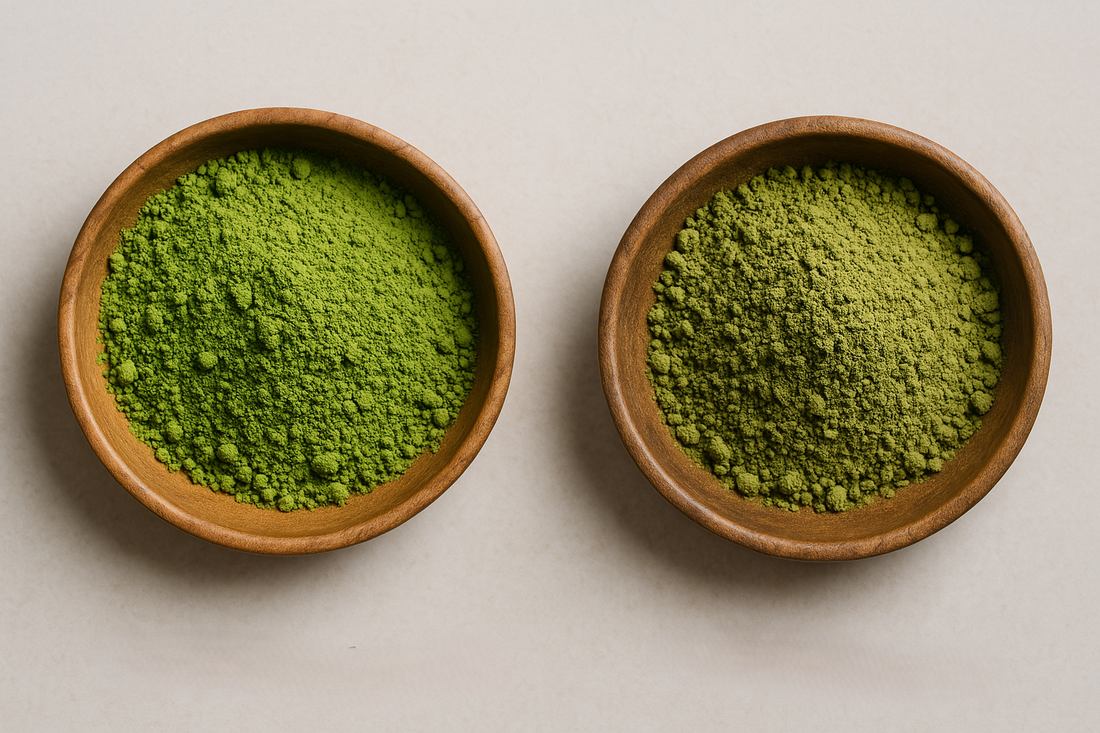
What are the differences between ceremonial and culinary grades of matcha?
Share
If you’re shopping for matcha, chances are you’ve come across the terms "ceremonial" and "culinary" grade. While they may sound like marketing buzzwords, the distinction between the two is actually quite important - especially if you want to enjoy matcha at its best.
So what’s the real difference? Let’s break it down.

Ceremonial grade matcha is made from the youngest, most tender leaves of the tea plant. These leaves are hand-picked, steamed, dried, and stone-ground with great care. The result? A powder that is incredibly fine, vibrant green, and smooth in flavor. Ceremonial matcha has a natural sweetness and creamy texture, making it perfect for traditional tea preparation or matcha lattes.
It’s the kind of matcha you drink on its own, with just water and a whisk. Because the flavor is more refined and less bitter, you don’t need sweeteners or milk to enjoy it. It’s about purity, calm energy, and ritual.
Culinary grade matcha, on the other hand, is made from slightly older leaves, which are more robust in flavor and a bit more bitter. That doesn’t mean it’s bad - it just serves a different purpose. Culinary matcha is perfect for recipes: smoothies, baked goods, pancakes, and even ice cream. Its stronger taste cuts through other ingredients without getting lost.
The color is usually a little duller (a deeper green or even olive tone), and the texture might be slightly coarser than ceremonial matcha. It’s also more affordable, which makes it ideal for everyday cooking.
So which one should you choose?
If you want to experience matcha as a mindful, daily drink - something smooth, energizing, and delicious on its own - ceremonial is the way to go. If you’re exploring creative recipes or adding matcha to your wellness smoothies, culinary matcha will do the trick.
Choosing the right grade ensures you get the best flavor and the best experience - whether you’re sipping slowly or blending boldly.
